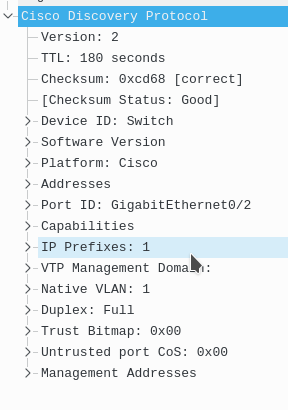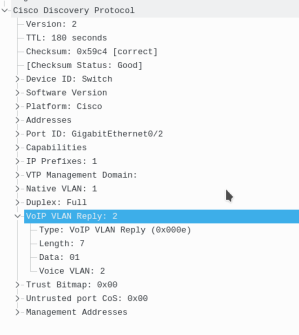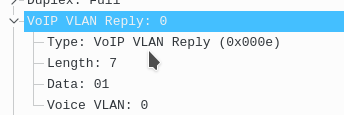Section 2.1.c (iii) Normal, Extended VLAN, Voice VLAN
99% of the time when you are working with vlans, you will be working with normal and extended vlans.
The normal range is 1 – 1001
The reserved range is 1002– 1005
The extended range is 1006 – 4094
The reserved range is reserved for FDDI and Token ring vlans.
If we use the extended range the switch must have the switch in vtp transparent mode or use vtp v3
Voice VLAN;
The voice vlan is a way for our access ports to advertise a voice vlan via CDP to Cisco phones.
This enables the phones to dynamically be moved, and also allows then to transmit vlan tagged voice data and untagged PC data
without explicit trunk configuration.
Although Cisco says its not a trunk, the voice vlan config on a port allows the port to receive .1q vlan 2 data for that vlan.
The voice vlan is only supported on access ports not trunks.
There are 4 ways to configure a voice vlan, from best to worst:
Switchport voice vlan
LLDP-MED
DHCP voice vlan option
Trunk configuration on port
Here is a normal CDP without the voice vlan


Here is a CDP packet with access vlan 1, and voice vlan 2


Switchport voice vlan offers us for configuration choices:
1. The most common configuration is something like this- switchport voice vlan X
int g0/1
switchport mode access
switchport access vlan 1
switchport voice vlan 2
The above sends the voice vlan via CDP to Cisco phones


2. switchport voice vlan dot1p
This option sends a voice vlan of 0, but lets the phone know they may send .1q headers with a vlan of 0, and .1p class of service (L2 qos)
It allows both the PC and phone to be on the same native vlan, but both can send .1q header with a vlan ID of 0, and use .1p bits


3. switchport voice vlan none
Don’t tell the phone about the voice vlan, but offer the capability if the phone knows about it some other way. Basically no voice vlan CDP info.
4. switchport voice vlan untagged
This tells the phone via CDP, send voice and data as untagged no .1q header thus no .1p header


2.1.c (iii) Normal, Extended VLAN, Voice VLAN